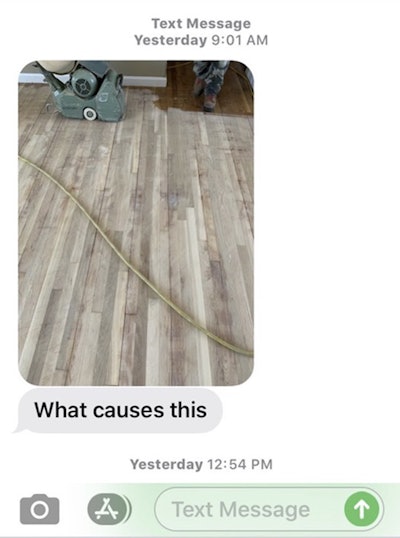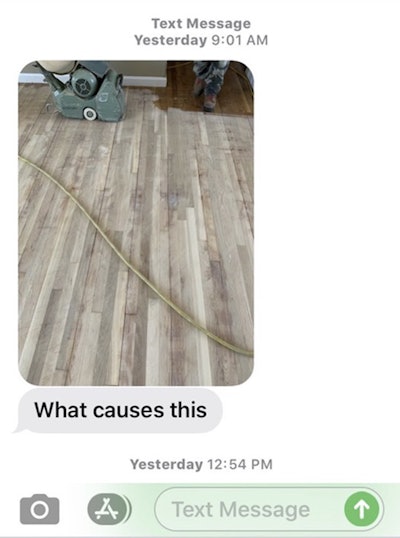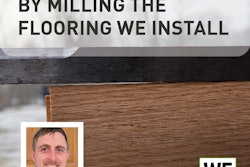
I received this text:

“What causes this?” If you’re a Billy Crystal fan and you remember the movie “City Slickers,”, then you could understand why my mind swiftly answered, “Scoop of chocolate, scoop of vanilla…” The mystery behind this simple photo and a simple question reveals a Wood Flooring 101 simple answer. Let’s take a look.

Upon closer inspection I would guess a lot of floor guys looking at this jump to the next level of visual inspection: The gaps. Oh, OK, there they are. Not only are the gaps pronounced, they are measurably consistent. A large gap every four boards (unless there is cross pull)—that’s every 9 inches. This tells me the subfloor is wide pine planking laid perpendicular to the floor joists, which explains why the floor is running long and not short and stubby, which also explains the massive, repetitive gaps. They married the subfloor. They ran the flooring with the pine planking subfloor in order to make the room look aesthetically pleasing.
It’s not that the floor gapped so much as the subflooring it is married to. It’s probably been like this for decades. No, it has been like this for decades.
I texted the contractor and asked if he could see subfloor planking in the basement. We have a lot of basements in New England. He said he didn’t think so. I said, “I know so.” He said, “I’ll check.” He called me back and said it was planking and in fact laid parallel with the flooring, with the gaps telegraphing the spacing of that planking. Case cracked.
Sometimes the simplest answers are the most accurate ones. This is kind of a Flooring 101 in our neck of the woods. I advised that no one fill those gaps—that does not fly here with our wildly changing environmental conditions (100 degrees and 90% RH in the summer, frigid cold and brutally dry all “heating season”). Between fall, winter, and spring (the collective heating season), we have about nine months of miserable foul weather. Neither season is very kind to hardwood flooring. Filling the gaps would either become a fractured mess in short order or cause this well-acclimated floor to buckle this summer. It isn’t worth the risk either way, and the floor likes things just the way they are.
This one is a nice one for our budding Encyclopedia Brown sleuths. But, being able to spot something as simple as this is of great help to those not in the know, and those with inquiring minds. Keep those cards, letters and emails coming, kids!
See more wood floor mysteries from Stephen Diggins:
Wood Floor Mystery #1: The Spreading Black Spots
Wood Floor Mystery #2: The Poly That Wouldn't Stick
Wood Floor Mystery #3: The Tale of the Half-Cupped Floors, Part 1
Wood Floor Mystery #4: How Did This Floor Get Like This?
Wood Floor Mystery #6: The Case of the Crawling Finish
Wood Floor Mystery #7: The Case of the ‘Burned’ Floor
Wood Floor Mystery #8: Is This Floor Fungus Among Us?
Wood Floor Mystery #9: A 'Sight' Inspection of a 'Disappearing' Gunstock Wood Floor, Part 1
































